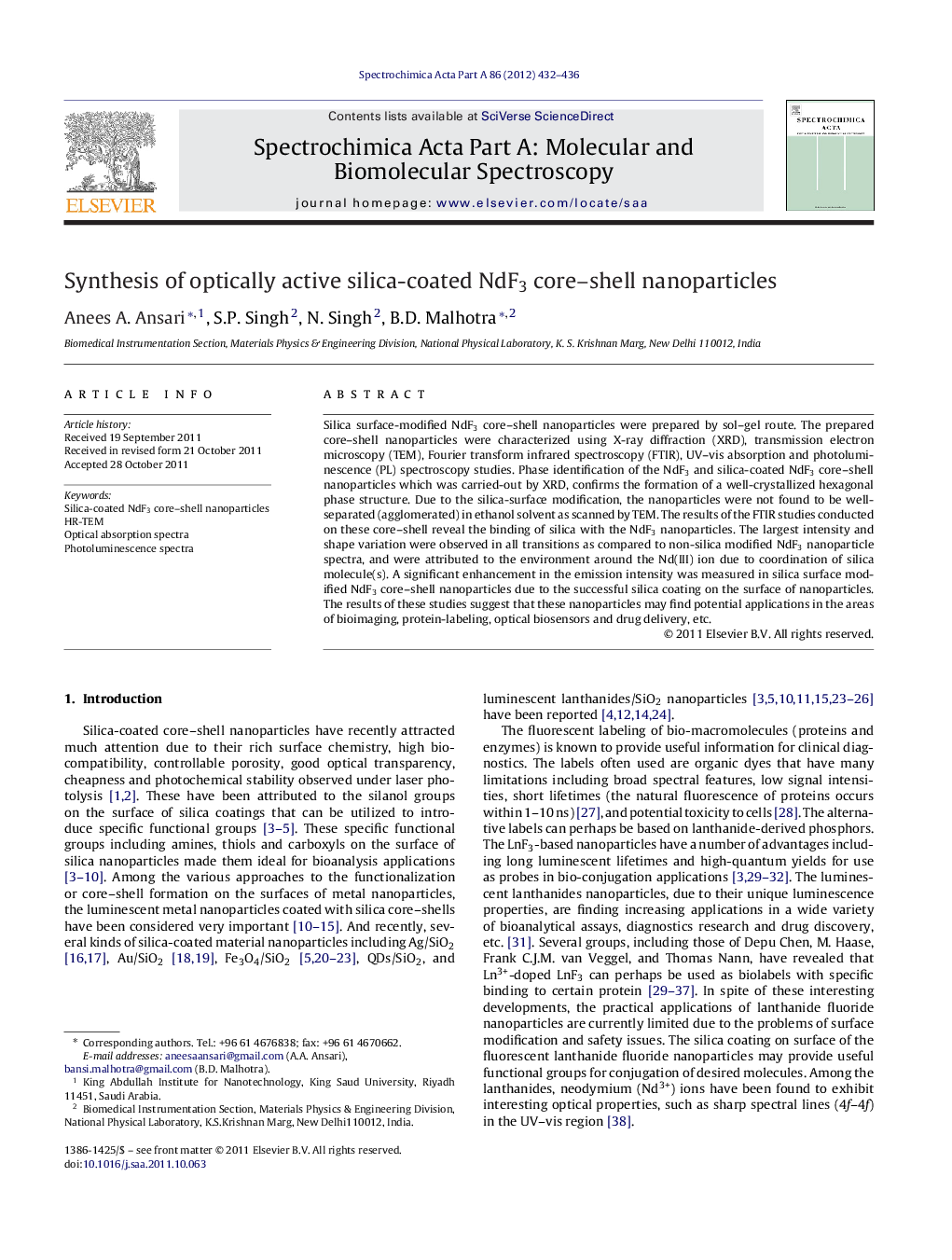| Article ID | Journal | Published Year | Pages | File Type |
|---|---|---|---|---|
| 1232636 | Spectrochimica Acta Part A: Molecular and Biomolecular Spectroscopy | 2012 | 5 Pages |
Silica surface-modified NdF3 core–shell nanoparticles were prepared by sol–gel route. The prepared core–shell nanoparticles were characterized using X-ray diffraction (XRD), transmission electron microscopy (TEM), Fourier transform infrared spectroscopy (FTIR), UV–vis absorption and photoluminescence (PL) spectroscopy studies. Phase identification of the NdF3 and silica-coated NdF3 core–shell nanoparticles which was carried-out by XRD, confirms the formation of a well-crystallized hexagonal phase structure. Due to the silica-surface modification, the nanoparticles were not found to be well-separated (agglomerated) in ethanol solvent as scanned by TEM. The results of the FTIR studies conducted on these core–shell reveal the binding of silica with the NdF3 nanoparticles. The largest intensity and shape variation were observed in all transitions as compared to non-silica modified NdF3 nanoparticle spectra, and were attributed to the environment around the Nd(III) ion due to coordination of silica molecule(s). A significant enhancement in the emission intensity was measured in silica surface modified NdF3 core–shell nanoparticles due to the successful silica coating on the surface of nanoparticles. The results of these studies suggest that these nanoparticles may find potential applications in the areas of bioimaging, protein-labeling, optical biosensors and drug delivery, etc.
Graphical abstractFigure optionsDownload full-size imageDownload as PowerPoint slideHighlights► Sol–gel rout was adopted to prepare the silica-surface modified NdF3 core–shell nanoparticles. ► Highly stable and water dispersible silica-coated core–shell nanoparticles of an average diameter of 30 nm were prepared. ► Remarkable optical properties of the core–shell nanoparticles are measured in visible region. ► Coating of the silica on the surface of nanoparticles enhanced the surface area as well as behavior of the nanoparticles for further biolabeling applications.
